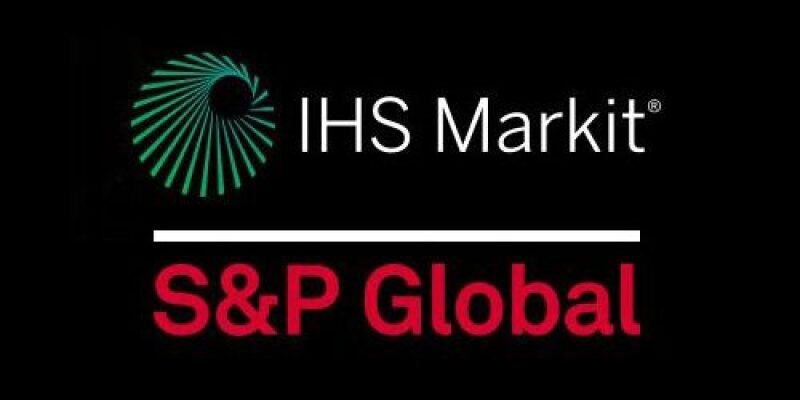Financial analytics company S&P Global and information provider IHS Markit announced they have agreed to merge in an all-stock deal that values IHS Markit at $44 billion. Both companies provide data and analytics related to the energy market and oil and gas assets, among other industries.
The combined company expects to generate free cash flow of more than $5 billion by 2023, said Douglas Peterson, president and chief executive officer of S&P Global, who will serve as CEO of the combined company, in a call with analysts on 30 November.
Under the terms of the agreement, which has been unanimously approved by the boards of directors of both companies, each share of IHS Markit common stock will be exchanged for a fixed ratio of 0.2838 shares of S&P Global common stock. Current S&P Global shareholders will own approximately 67.75% of the combined company, while IHS Markit shareholders will own approximately 32.25%.
Lance Uggla, chairman and CEO of IHS Markit, will stay on as a special adviser to the company for 1 year after the deal is closed, which is expected in the second half of 2021.
A recent story from Bloomberg, whose parent company is a competitor of IHS Markit and S&P Global, said that the deal would be the second largest acquisition in 2020, next to a $56-billion set of deals for China’s largest oil and gas companies to sell their pipelines to a national carrier. “This is a huge consolidation of financial databases and services,” the story quoted Gary Dugan, chief executive officer of the Global CIO Office, an investment firm in Singapore, as saying. “S&P probably gathered that expansion incrementally wouldn’t work and instead has gone for a major acquisition, which will deepen their product range and relevance.”
One sticking point in the merger could be regulatory hurdles the companies must clear before combining. Asked about the regulatory processes around the globe, particularly in China, Peterson was dismissive of the possibility of any problems. “We’ve been very well advised throughout this transaction,” he said. “We do not have any approval that was required in China. Since we’ve been so well advised—we looked at this very carefully—we don’t believe that there are any regulatory issues that can’t be resolved if they do come up.”
Peterson and Uggla said they expect the increase in scale that the merger will create will boost resilience in their portfolios. “Together, we’ll offer differentiated data analytics, research, and benchmarks important to the work flows of many of the world’s leading companies. S&P Global and IHS Markit’s unique and highly complementary assets increased scale and joint offerings will be augmented with cutting-edge innovation and technology capability, including [S&P Global’s] Kensho and the IHS Markit Data Lake,” Peterson said.
“As part of the ongoing commitment to remaining on the cutting edge of technology innovation, the combined company will continue to deploy well above $1 billion per year on technology,” Peterson said.
He highlighted environmental, social, and corporate governance (ESG) as offering opportunities for benchmarks, biofuels, carbon credits, hydrogen, battery metals, wind, and solar. “We’ve got the RobecoSAM and Trucost businesses already that will add more data, and we can accelerate our data gathering through there. We have the supply chain information, et cetera. So, there’s an entire set of ESG and climate and energy transition opportunities, which are new and exciting for all of us, and we can really leverage the capabilities.”
Highlighting the alignment of the two companies, Peterson pointed out that the technology in place at both companies should ease the transition. “We don’t have to merge platforms. We don’t have to eliminate anything,” he said. “Three years ago, we set up a plan—it’s interesting, it’s almost the same exact plan that Lance had put in at the same time—to convert from data centers to cloud strategies for managing all of our data. And, so, the two of us together mostly have the same vendors. … It’s going to make it a lot easier when we’re already cloud-to-cloud instead of having to go through data centers.”

